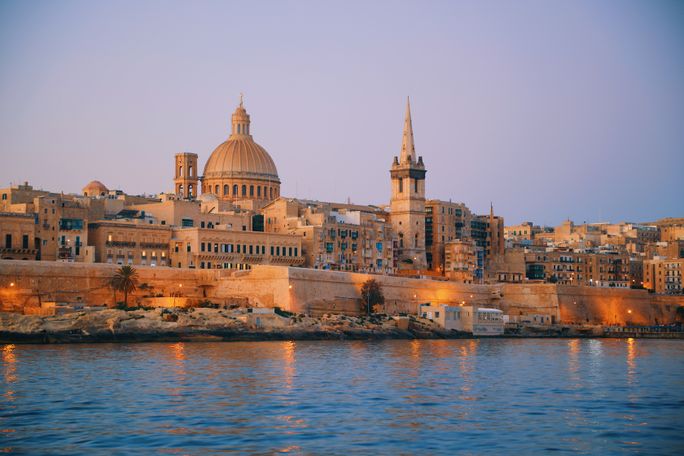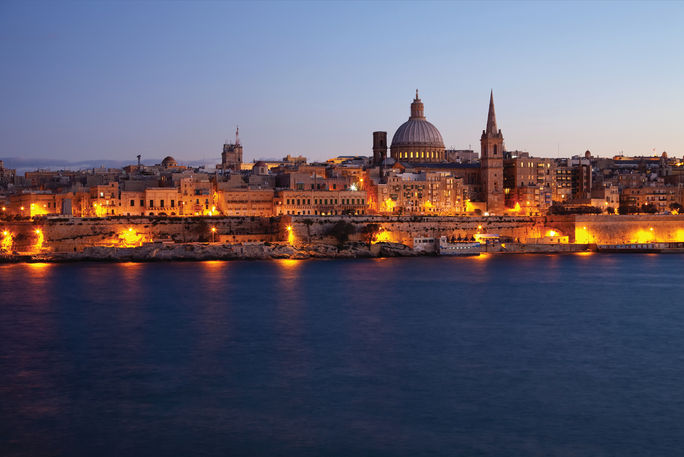Viking Returns to Cruising in China, Expands Asia Program for 2025
September 21, 2024New Cruise Ships to Watch Out for in 2025
September 22, 2024
Valletta, Malta – Photo Credits: Malta Tourism Authority
The Malta Tourism Authority (MTA) is planning to increase its staff presence in the North American market and will open an official MTA office in New York in 2025, according to Carlo Micallef, CEO, speaking at an event in New York for the travel industry and travel media. The eventual objective, he said, is to have a nonstop flight to Malta from the U.S.
In order to achieve that goal, Micallef said the MTA “is putting major effort into working hard to increase U.S. arrival numbers from the 65,000 expected in 2024 to 100,000.” Malta has been represented in North America since 2014 by New York-based Michelle Buttigieg, who has developed strong relationships with the travel trade, including organizations like the U.S. Tour Operators Association and Virtuoso. She also launched the Travel Agent Academy.
Malta plans to build on a strong post-pandemic recovery with a campaign focusing on the Mediterranean island’s rich heritage and culture under the banner “Explore More”, according to Micallef in an interview with TravelPulse.
Before the pandemic, Malta – which includes the main island and two smaller ones — had 2.7 million visitors. This year, it will welcome 3.5 million — plus one million cruise visitors. Looking ahead, said Micallef, the destination seeks to grow in a way that ensures a quality experience for travelers who are “curious” and “educated” – the demographic that tends to spend more and has a more positive impact on a destination.
“We don’t want to be the cheapest destination,” said Micallef, “and we don’t want to compete on price. However, we want to provide the best value to visitors.”
The destination, said Micallef, intends to diversify its visitor sources geographically with more long-haul flights because almost all overnight visitors arrive by plane. An important step, he said, will be a regular service from Aer Lingus from Dublin beginning in October that will be of decided appeal to U.S. travelers.

The focus on heritage and history starts with the 8,000 years of recorded history on the islands, which began in the Neolithic era and continued through the Knights of St. John, the Romans, Arabs, and the French briefly, then a long period of British colonialism before independence. “All of these have left their marks,” said Micallef.
The country also has a strong connection with the U.S., with participation in the American Revolution and a critical role as a base during World War II. “We have a strong historic appeal to the American traveler,” said Micallef.
Among the island’s attributes are 300 days of sun a year, a heavily English-speaking population and three UNESCO World Heritage Sites, including prehistoric Megalithic Temples, claimed by some as the oldest freestanding structures on Earth. The city of Valletta itself is a world heritage site.
Noel Zammit, CEO of Heritage Malta, said there has been an increase in visitors interested in the island’s culture and history. With that in mind, the MTA is launching a multi-pronged campaign that includes the display of replicas of unusual skulls discovered 100 years ago in the ruins of an ancient temple.
In addition, a Taste History program said Zammit, “is where we offer a taste of our history through authentically recreated recipes.” Maltese chefs have come together to recreate dishes in the actual venues where they were consumed centuries ago.
“We have so many stories to tell,” said Micallef, “thus, the Explore More campaign can be extended to Explore More History, Explore More Stories, Explore More Flavors, etc. – each depending on the targeted market. Even a campaign aimed at divers would say ‘Explore More Depth.’”
Micallef said that Malta had avoided overtourism issues because attractions and hotels are spread around the island. He said that hotels are located where locals live with the objective that “every visitor arrives as a tourist and leaves as a local.
“We are wary of overtourism,” said Micallef, “which is why we are moving toward low-impact tourism.” With that comes a strong focus on sustainability. He said the island only wants to grow 3-4% a year, with the U.S. being a prime target for that growth. Another goal is for visitation to spread throughout the year, although Malta is already a year-round destination.
Aside from the coming Dublin service, Malta has connections from all around Europe, including Istanbul.
As for cruises, Micallef said authorities are working with ports to spread arrivals throughout the week and limit the number of passengers at any one time.
And Malta has long had a strong affinity for the travel trade, said Micallef. During the pandemic, when others were moving away from the trade, Malta consciously went the other way through marketing and continued to provide content. “We used that period,” said Micallef, “to educate travel advisors through webinars and other platforms.”
The product keeps improving, said Micallef, with significant investments in roads and other infrastructure – and the development of more hotels. A strong lodging trend is the conversion of palaces around the island into boutique hotels. The palaces were built for the Knights of Malta, who ruled the country for almost three centuries.
Moving ahead with the heritage theme, Micallef said Malta will market toward more targeted segments like military and religious tourism. With an ever-strong partnership between the MTA and Heritage Malta, said Micallef, “we will work to sustain our culture and heritage for generations to come.
“You can only appreciate Malta if you visit,” concluded Micallef; “as we always say, the island is an open air museum.”
This article originally appeared in TravelPulse.
